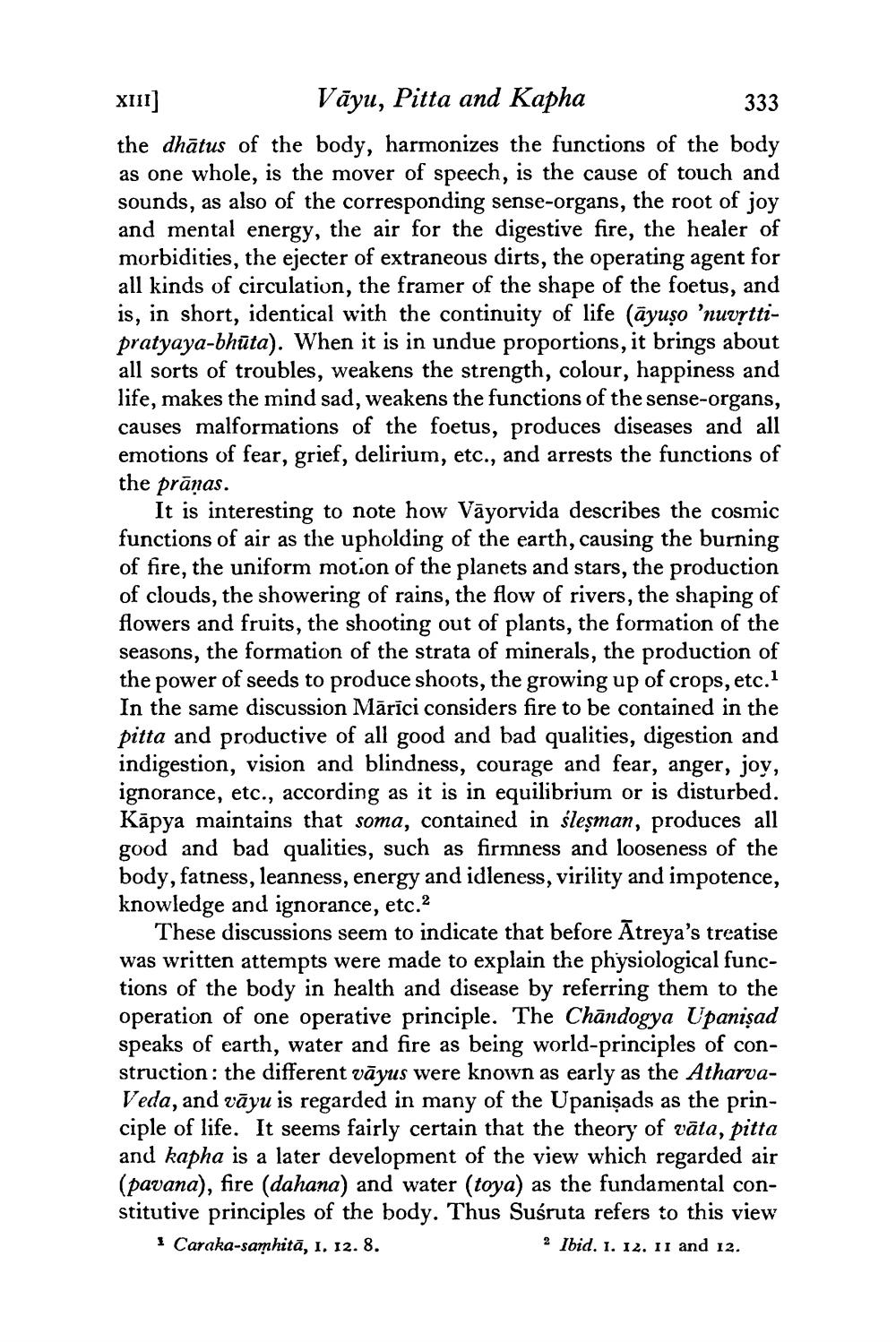________________
XIII] Vāyu, Pitta and Kapha
333 the dhātus of the body, harmonizes the functions of the body as one whole, is the mover of speech, is the cause of touch and sounds, as also of the corresponding sense-organs, the root of joy and mental energy, the air for the digestive fire, the healer of morbidities, the ejecter of extraneous dirts, the operating agent for all kinds of circulation, the framer of the shape of the foetus, and is, in short, identical with the continuity of life (āyuso 'nuvrttipratyaya-bhūta). When it is in undue proportions, it brings about all sorts of troubles, weakens the strength, colour, happiness and life, makes the mind sad, weakens the functions of the sense-organs, causes malformations of the foetus, produces diseases and all emotions of fear, grief, delirium, etc., and arrests the functions of the prānas.
It is interesting to note how Vāyorvida describes the cosmic functions of air as the upholding of the earth, causing the burning of fire, the uniform motion of the planets and stars, the production of clouds, the showering of rains, the flow of rivers, the shaping of flowers and fruits, the shooting out of plants, the formation of the seasons, the formation of the strata of minerals, the production of the power of seeds to produce shoots, the growing up of crops, etc.1 In the same discussion Mārici considers fire to be contained in the pitta and productive of all good and bad qualities, digestion and indigestion, vision and blindness, courage and fear, anger, joy, ignorance, etc., according as it is in equilibrium or is disturbed. Kāpya maintains that soma, contained in śleşman, produces all good and bad qualities, such as firmness and looseness of the body, fatness, leanness, energy and idleness, virility and impotence, knowledge and ignorance, etc.?
These discussions seem to indicate that before Atreya's treatise was written attempts were made to explain the physiological functions of the body in health and disease by referring them to the operation of one operative principle. The Chāndogya Upanişad speaks of earth, water and fire as being world-principles of construction: the different vāyus were known as early as the AtharvaVeda, and vāyu is regarded in many of the Upanişads as the principle of life. It seems fairly certain that the theory of vāta, pitta and kapha is a later development of the view which regarded air (pavana), fire (dahana) and water (toya) as the fundamental constitutive principles of the body. Thus Suśruta refers to this view 1 Caraka-samhitā, 1. 12. 8.
? Ibid. 1. 12. 11 and 12.




